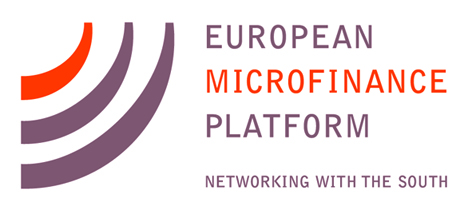Mary  Ellen Iskenderian of the US-based NGO Women’s World Banking (WWB) spoke today, the closing day of European Microfinance Week, about the impact of the COVID-19 pandemic on women and girls. Of the challenges they face, she said “COVID didn’t create these gaps, but it shines a bright light on the fissures, and we don’t want to see these grow larger.” As an example, she cited the strides made in recent years in terms of enrolling girls in primary education. She called this the single most powerful tool for creating development impact. However, one of the first things she has seen families in developing countries doing in response to COVID-19 is taking their daughters out of school.
Ellen Iskenderian of the US-based NGO Women’s World Banking (WWB) spoke today, the closing day of European Microfinance Week, about the impact of the COVID-19 pandemic on women and girls. Of the challenges they face, she said “COVID didn’t create these gaps, but it shines a bright light on the fissures, and we don’t want to see these grow larger.” As an example, she cited the strides made in recent years in terms of enrolling girls in primary education. She called this the single most powerful tool for creating development impact. However, one of the first things she has seen families in developing countries doing in response to COVID-19 is taking their daughters out of school.
On the positive side, Ms Iskenderian noted “a silver lining, that saving groups are starting to use digital services more.” Countries including India and Peru sent COVID-19 relief funds specifically to women. Regulators in many countries also have allowed remote account opening for the first time, which can be very valuable to women whose mobility is limited by family obligations and other social factors. Ms Iskenderian also said, “We’ve seen in many countries that savings has risen, which is a good sign.” This indicates that institutions have built strong trust relationships with their customers, as “in the past we have seen crises leading to runs on banks.”
Before the onset of the pandemic, WWB had been working with India’s Bank of Baroda to boost outreach to women via increased usage of banking correspondents (BCs). The bank found that female BCs got more traction with customers, as both men and women were more comfortable working with them rather than male BCs. These BCs were critical as Bank of Baroda became a channel for government-to-person (G2P) COVID-19 relief payments. In addition to getting aid to families, this resulted in many women opening bank accounts for the first time. Notably, the bank treated the BCs very well, providing them with personal protective equipment as well as health insurance.
Savings among women in Indonesia also increased as a result of increased G2P payments prompted by the pandemic. Women receiving the payments asked telling questions: “Can I save some of this money in a bank account?” “Can I keep it private from my husband?” Although many hadn’t realized they held accounts from previous G2P payments, they learned quickly.
Regarding the potential “miracle” of digital financial services, Ms Iskenderian pointed out that 300 million women worldwide do not own cell phones. Even more women lack smartphones and internet access, keeping them from accessing most innovations in digital services. Another major problem is lack of digital literacy. To address gaps in digital and financial literacy, Ms Iskenderian argued that the “classroom model is the least effective way to communicate. We need to take that burden on and see it as an opportunity,” for example by integrating learning directly into mobile-money apps.
To encourage financial services providers to focus more on serving women, WWB adopted a “customer lifetime model” several years ago. This model shows that women usually make smaller transactions than men, but over time women are more profitable as customers because they are cheaper to recruit as new customers and are more loyal customers.
Looking forward, Ms Iskenderian said there is still a huge need for gender-disaggregated data. Meanwhile, there is reason for optimism as regulators have been getting serious about gender inclusivity, including among their own staff and leadership. Also, she says, countries such as India that have set goals for better serving women have been reaching those goals successfully.
This feature is part of a sponsored series on European Microfinance Week 2020, which took place online from November 18 through November 20. The event is held annually by e-MFP. MicroCapital has been engaged to promote and report on the conference each year since 2012.
Additional Resources
European Microfinance Platform (e-MFP) information on European Microfinance Week 2020
http://www.e-mfp.eu/european-microfinance-week-2020
MicroCapital coverage of European Microfinance Week, including the European Microfinance Award
https://www.microcapital.org/category/european-microfinance-week/
Similar Posts:
- SPECIAL REPORT: Leveraging Financial Inclusion to Get Food Security Back on the Increase #EMW2023
- SPECIAL REPORT: Yikri of Burkina Faso Wins $110k European Microfinance Award for Progress Toward Food Security #EMW2023
- SPECIAL REPORT: Banco FIE of Bolivia Takes $100k “Financial Inclusion that Works for Women” European Microfinance Award 2022
- SPECIAL REPORT: Saluting MFI Staff, Promoting Flexible Products, “Keeping the Client at the Heart” as European Microfinance Week Closes
- MICROFINANCE EVENT: Financial Inclusion That Works for Women; March 2, 2023; London, UK
